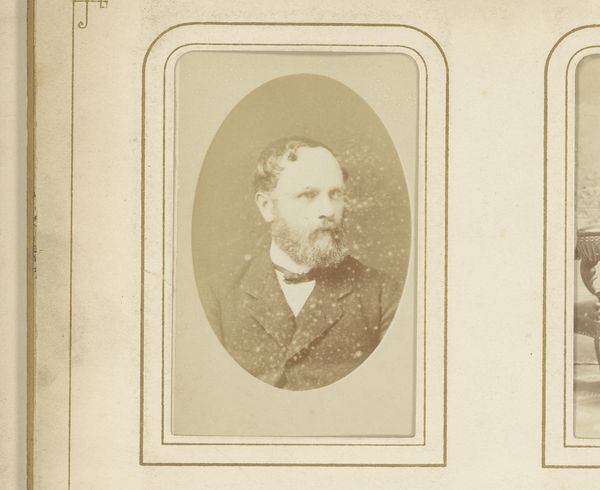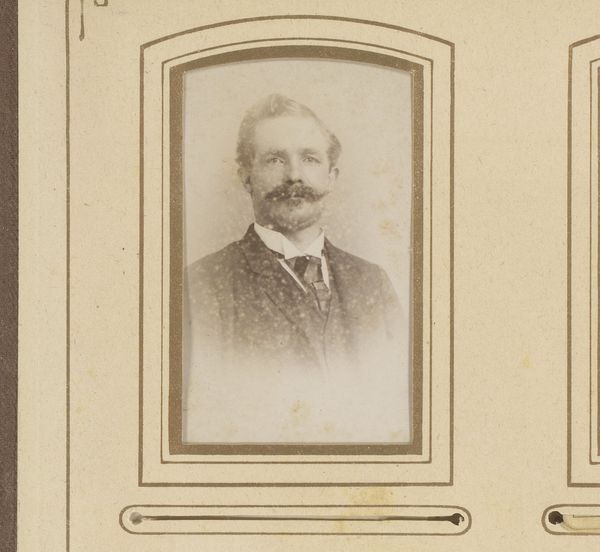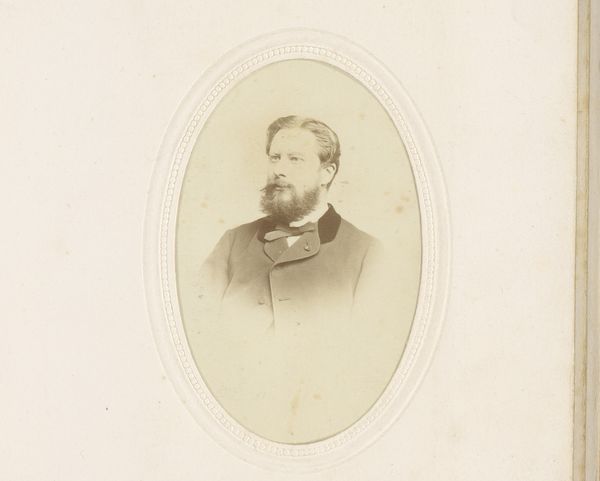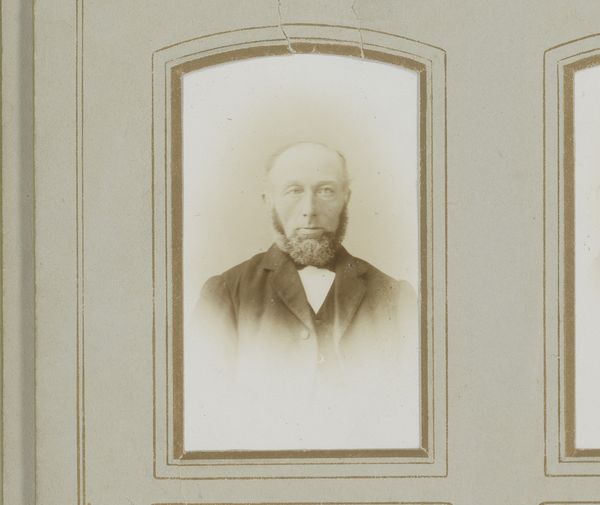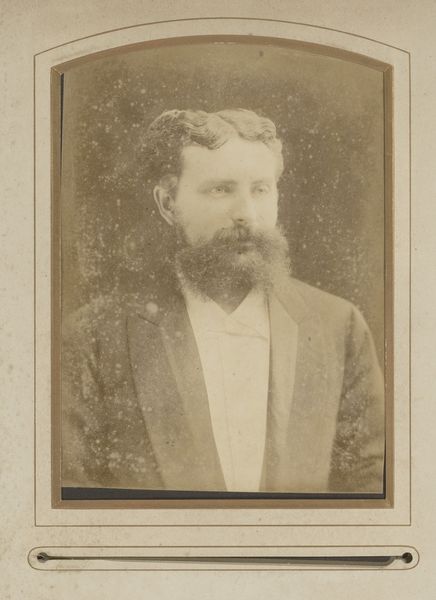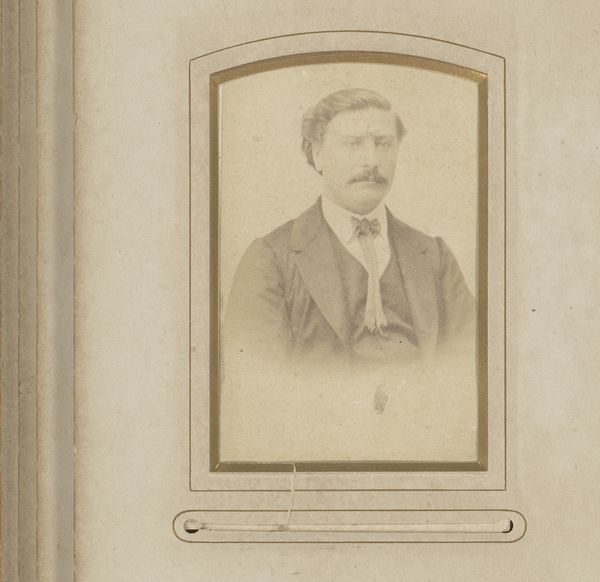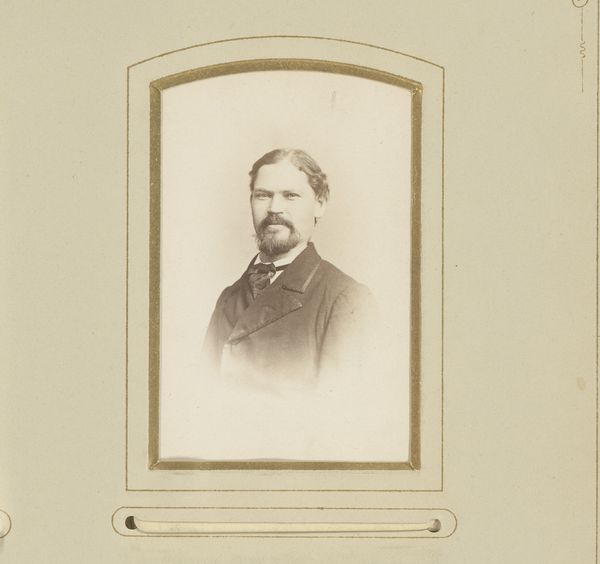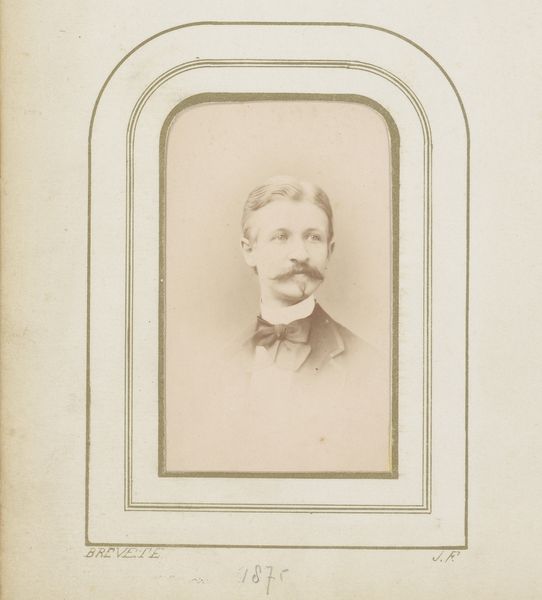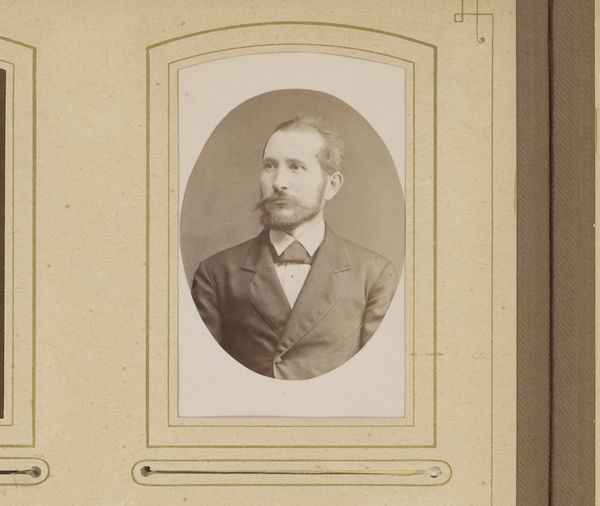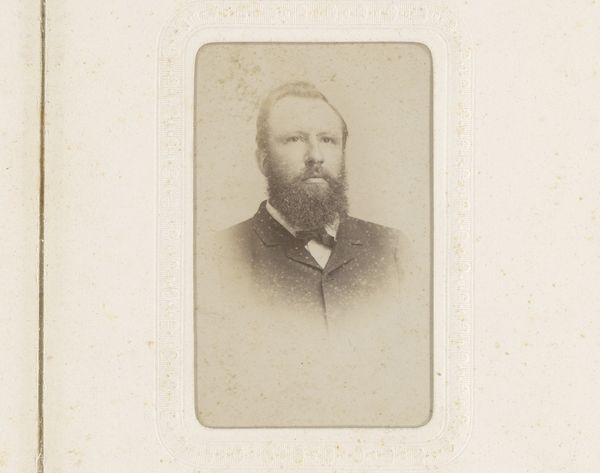
photography, albumen-print
#
portrait
#
photography
#
albumen-print
#
realism
Dimensions: height 84 mm, width 51 mm
Copyright: Rijks Museum: Open Domain
Curator: The photograph, “Portret van een man met snor en baard,” dating from 1857-1894 and attributed to P. Siewers & Zoon, offers a compelling glimpse into the past. What strikes you immediately about it? Editor: The sepia tone gives it such a weight, a gravity. And the way the light catches on his beard... you can almost feel the texture, even through the hazy image. The albumen print adds a lovely, tactile feel to the experience of viewing it. Curator: Indeed. Albumen prints, popular at the time, involve coating paper with egg white, giving that distinctive sheen and depth, a physical commitment to immortalizing this man. Considering the photographic process, what do you think he's trying to tell us through his portrait? Editor: Well, his tailored jacket and tie definitely hint at a certain status. Perhaps a businessman, or someone aspiring to rise in society. It makes you consider what sort of societal pressures would have caused someone to wish for a permanent record of self like this, when photography was more novel than everyday. The albumen process required skill and material investment; its display signifies social position. Curator: The sitter’s gaze doesn’t quite meet ours, a very common practice. The lack of direct eye contact in many older photographs conveys, I think, a sense of detachment or a wish to maintain distance. In that sense, the photograph might almost represent an idealization rather than the truly 'real'. He’s presenting himself in the best possible light, as someone to be respected. The slight softness of the focus suggests the photographer's hand in shaping this image, manipulating the subject for a refined depiction. Editor: You are right, though the light is the star for me here. You can see how the photographer worked with it, how his jacket seems lit just to show off the texture of the textile, and emphasize his sturdy presence. One has to wonder how the economic accessibility of creating images like these effected broader markets in materials, equipment and skilled practitioners. The development of commercial photography changed the visual culture and social structures profoundly. Curator: Precisely. The social function, even from its origins, was undeniable, and often strategic. His appearance conveys more than words alone ever could. Ultimately, what persists for me, is not just the visual elements but what is missing – the thoughts of the man within that image, and the many hands required to produce the technology and chemistry, let alone the print. Editor: Agreed. What sticks with me is this interplay between permanence and process, revealing how much these portraits reflected labor, materials and aspiration, beyond just artistry.
Comments
No comments
Be the first to comment and join the conversation on the ultimate creative platform.

